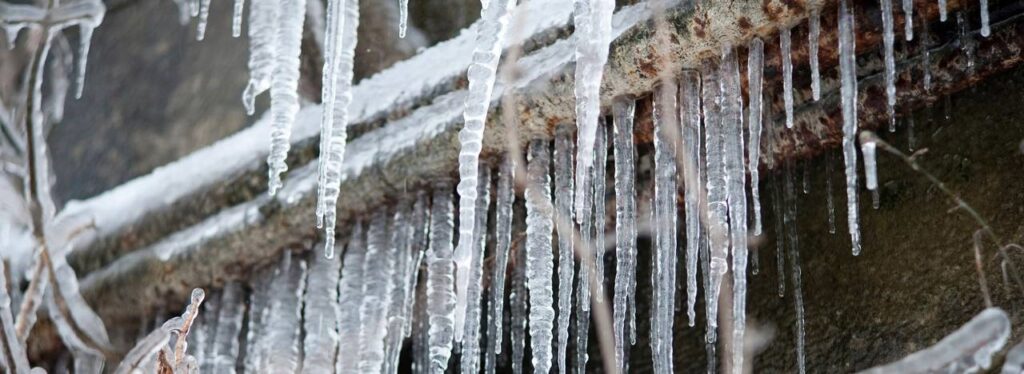
Did You Know?
MCWA’s Shoremont Water Treatment Plant can produce up to 140 million gallons a day.

Pipes that freeze most frequently are:
- Pipes that are exposed to severe cold, i.e. outdoor piping.
- Water supply pipes in unheated interior areas like basements and crawl spaces, attics, and garages.
- Pipes that run against exterior walls that have little or no insulation.
How to Prevent Frozen Pipes:
- Keep garage doors closed if there are water supply lines in the garage.
- Open kitchen and bathroom cabinet doors to allow warmer air to circulate around the plumbing. Be sure to move any harmful cleaners and household chemicals up out of the reach of children.
- When the weather is very cold outside, let the cold water drip from the faucet served by exposed pipes. Running water through the pipe – even at a trickle – helps prevent pipes from freezing.
- Keep the thermostat set to the same temperature both during the day and at night. By temporarily suspending the use of lower nighttime temperatures, you may incur a higher heating bill, but you can prevent a much more costly repair job if pipes freeze and burst.
- If you will be going away during cold weather, leave the heat on in your home, set to a temperature no lower than 55° F.
How to Thaw Frozen Pipes
- If you turn on a faucet and only a trickle comes out, suspect a frozen pipe.
- Check all other faucets in your home to find out if you have additional frozen pipes. If one pipe freezes, chances are others are frozen, too.
- Keep the faucet open. As you treat the frozen pipe and the frozen area begins to melt, water will begin to flow through the frozen area. Running water through the pipe will help melt ice in the pipe.
- Apply heat to the section of pipe using an electric heating pad wrapped around the pipe, an electric hair dryer, or by wrapping pipes with towels soaked in hot water. Do not use a blowtorch, kerosene or propane heater, charcoal stove, or other open flame device.
- Apply heat until full water pressure is restored.
If you are unable to locate the frozen area, if the frozen area is not accessible, or if you are unable to thaw the pipe, or have any questions or concerns with trying to thaw frozen pipe/s yourself, call a licensed plumber.
